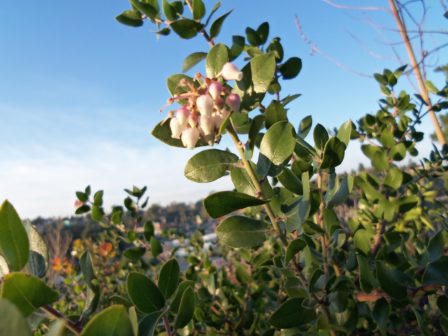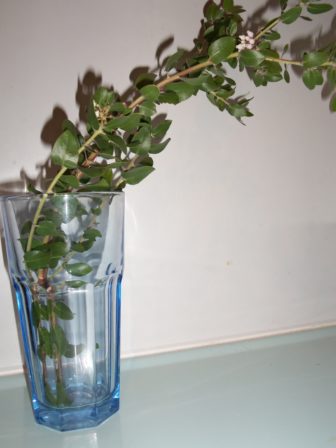Herbal Affinities
When you listen to herbalists talk about plants, they may say that a certain plant “has an affinity” to a certain organ. To ascribe a preference to a plant seems a bit anthropomorphic unless you understand the mechanism involved. One great example of this principle is the compound Arbutin. Arbutin is found in a variety of plants, including cranberry and mulberry leaf or in the fruit skins of pear and quince. The richest source is found in the plant Uva Ursi (Arctostaphylos uva ursi), sometimes called bear berry. Our local variety of this plant will probably be more familiar to you; it is called Manzanita. This plant is said to “have an affinity” for the kidneys and bladder. It is commonly used in teas to treat bladder infections, cystitis and kidney stones. It is a ubiquitous addition to blend and mixes intended to treat urinary tract infections.
When you look into the plant chemistry, the idea of affinity begins to make a bit more sense and seem less metaphorical. The constituent considered to be the main active ingredient in the leaves of Manzanita is called Arbutin. Arbutin is a glycoside, a glucose molecule bonded to a non-glucose molecule, and it is water soluble. When the leaf tea, or capsule of powdered herb, is ingested, the stomach acids will begin breaking the glucose bond and release the non-glucose compound. In the case of arbutin, what is released is hydroquinone (HQ), a substance well known as an astringent, antibacterial and disinfectant. This substance is absorbed into the blood stream, but does not interact with anything until it reaches the kidneys. The kidneys filter it out of the blood stream for processing into urine, which concentrates the HQ. The concentrated HQ disinfects the renal tubules, the bladder and the ureters, dealing with viral, fungal and bacterial infections. The reason that the plant “has an affinity” for the kidneys is because the compounds in it are broken apart and used in that location by the specific action of that organ.
The astringency and disinfecting properties of arbutin/HQ can be irritating to the tissues and can stimulate the nervous system. Consequently, the herb is rarely given alone, but is generally mixed with other herbs that will counter the irritation with a protective and soothing coat of mucilage. Mallow root, is the classic addition to the mix for this purpose. Other diuretic herbs are often added, such as cleavers, dandelion leaf or parsley, to prompt the kidneys to produce more urine and process more of the HQ. The treatment is intended to be short term, no more than three or four days, and stopped when the symptoms go away. The best time to take the tea is in the morning, to avoid jitteriness or sleeplessness.
It may be good to add a nerve-soothing herb to the recipe. My own favorite herb for this purpose is Linden blossom (Tilia), since it tastes great, will mellow you out, is an effective anti-inflammatory, and also creates a soothing gel to coat the tissues. Your final list of ingredients might look like this: half an ounce of Manazanita/Uva Ursi leaves, quarter of an ounce of Tilia, eighth of an ounce of Mallow root, eighth of an ounce of cleavers or dandelion leaf. This would be steeped in four cups of hot water for about 15 minutes. Strain and drink one cup four times during the day.
You may find that you have “an affinity” for Manzanita leaves, now that you understand how they can work with your body to maintain health.
Category: Life Style









